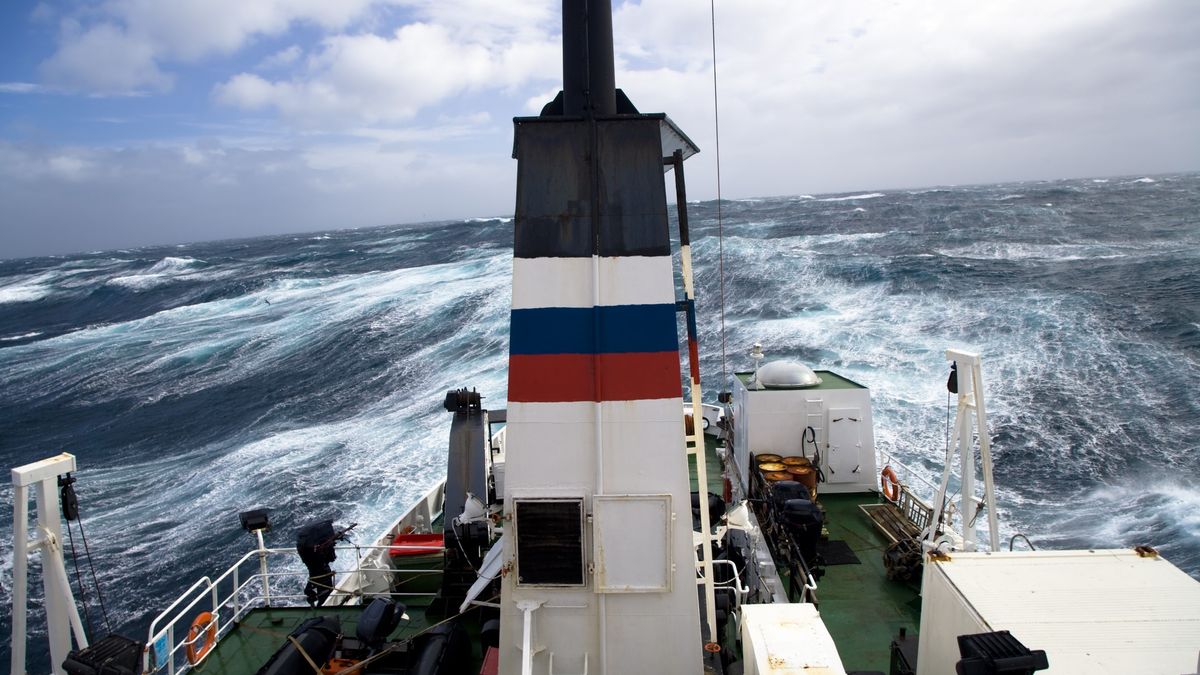23 March 2025: Spring looms and boats will be getting splashed for longing and deprived sailors and boaters - Some of us in the southern climes have been fortunate to have our boats all winter in warm sunny waters, but you folks in the frozen wasteland of snow country are finally getting the break you have waited for all these past few cold months. And speaking of getting out on the water, here's one for the more daring of you! From Live Science:
~~~~~~~~~~~~~`
Drake Passage: The 'most dreaded bit of ocean on the globe' — where waves reach up to 80 feet
The Drake Passage off the West Antarctic Peninsula is a notoriously dangerous channel that connects the Atlantic, Pacific and Southern oceans.
The waves are so strong in the Drake Passage, their effect has been dubbed the "Drake shake." (Image credit: Mlenny/Getty Images)
Why it's incredible: The passage is one of the world's most dangerous ocean crossings.
The Drake Passage is an ocean channel between the southern tip of South America and the West Antarctic Peninsula. Named after the 16th-century explorer Sir Francis Drake, it is notorious for whipping up wild storms and monster waves up to 80 feet (25 meters) tall.
The passage is "the most dreaded bit of ocean on the globe," Alfred Lansing wrote in his 1959 book "Endurance: Shackleton's Incredible Voyage to the Antarctic." At around 600 miles (965 kilometers) wide, the channel is relatively narrow compared with the ocean around it, meaning currents speed up as they are forced through the passage. The same goes for southern winds, which blow unimpeded from west to east around Antarctica before they reach the Drake Passage.
As winds funnel through the passage, they whisk up huge waves, some of which can be dangerous — and even deadly — for passengers on boats making the 48-hour-long crossing. In the best case, the waves make for a bumpy ride, known as the "Drake shake."

"It's always interesting when you go to dinner and they put sticky mats on all the tables to make sure your plates and things don't slide around," Karen Heywood, a professor of physical oceanography at the University of East Anglia in the U.K. who sailed through the Drake Passage in 2024, told National Geographic.
The Drake Passage is a "melting pot" of currents from the Atlantic, Pacific and Southern oceans, Heywood said. The waters are so turbulent that the layers which normally make up the seas mix together, meaning the passage draws a lot more carbon down into its depths than other parts of the ocean do.
The world's oceans lock away more than 30% of the carbon humans emit into the atmosphere every year, and the Drake Passage could be one of a handful of places where this activity is particularly pronounced, National Geographic reported.
The passage also keeps Antarctica cold, because it cuts off warm air that would otherwise blow south from South America. Research suggests that when the Drake Passage opened between 49 million and 17 million years ago, it triggered significant cooling in Antarctica and contributed to the growth of giant ice sheets on the continent.
The temperature drop as you traverse the passage is noticeable even for people on ships, Alberto Naveira Garabato, a professor of physical oceanography at the University of Southampton in the U.K., told National Geographic. "Suddenly you are in this icy world," Naveira Garabato said.
So, while extreme winds and currents inside the passage create terrifying conditions for passengers, they also help to maintain Antarctica's frigid climate — although climate change is slowing the system.
Were it not for the Drake Passage and its wild weather, the frozen continent would likely hold much less ice than it currently does.
~~~~~~~~~~~~~~~
We have been through the Drake Passage - on a small passenger ship and we were blessed with relatively calm waters, but a single look at a chart or map will show you how, with nothing but open water all the way around the globe, the winds and seas can really get huge.... and those intrepid sailors who race the 'round the world single handed races can attest that those waters in the southern ocean can get pretty exciting!
Until next time,
Fair Winds,
Old Salt

